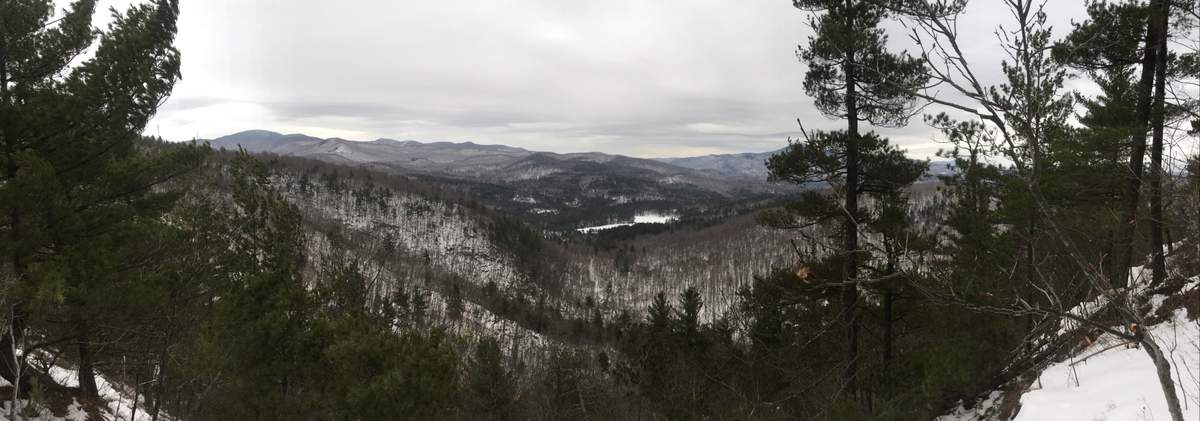How to Interpret a Landscape

Colorado River Canyon and Nanedi Vallis on Mars. Nearly identical in shape, indicating similar processes at work.
Say you’re an interplanetary explorer, recently arrived at some distant outpost, a place called Edlund. At first the landscape seems utterly foreign, you’re entranced by the details and can’t seem to see the forest for the trees, or the cosmic asteroid storm for the craters. The ever dedicated naturalist, you’re compelled to understand this new world, to see what makes it tick, what disparate forces have carved its contours. As you start to wander around, patterns in the details begin to emerge. Some of the patterns remind you of those in your own backyard back on your home planet.
What joy to begin to understand! You want to share this sense of joy and discovery by writing a field guide to Edlund for other interplanetary explorers. You hope to help others see and understand the fascinating and complex forces that have shaped this place through deep time, yielding a unique expression of the natural world. But where to begin organizing your thoughts? You need a framework to guide your along the way as you tease out the stories of the landscape.
As a grad student I learned a wide range of tools and frameworks that I find critical to interpreting landscapes. Last year I undertook just such a project, using a hodgepodge of these tools and frameworks to write a guide to the natural history of my mom’s property in Richmond: My Neighbors’ Woods. In this series of posts, I want to share some of those tools and guide you through the process I use for interpreting the natural history of a landscape here in Vermont (note: while some of the resources and guiding questions I use are unique to Vermont, the general process could be used anywhere). It is a powerful experience to go outside your door and see 500 million years worth of history unfold with a few simple observations. I hope to help you feel confident doing just that.
Frameworks
A (the?) core element of landscape interpretation is having a framework with which to guide your approach to observation and data collection. Each framework has its own strengths and weaknesses, and I often employ more than one to help me see a landscape from different angles. Here are a few different frameworks I’ve used:
- Pieces, Patterns, Processes: Pieces are the details, the ingredients that make up a landscape. They may be abiotic (nonliving, like bedrock, soils, water features) or biotic (living things like trees, birds, nematodes, and fungi). A study of the pieces often reveals patterns through space on time in how they are arranged on a landscape. Processes are the causal explanations for why these patterns exist. Processes often look to deep time to reconstruct previous events that shaped a landscape.
- Who What Where When Why How: Essentially the same as PPP, this approach is used in part to organize Animal Tracking by Jon Young. This lends itself nicely to writing a compelling story but often focuses in on a few focal elements of a landscape to tell the story.
- The Layer Cake Approach: We build a landscape from the ground up, starting with the abiotic layers: bedrock geology, surficial geology, and hydrology. We then map on vegetation, wildlife, and humans. This is a very easy visual framework that covers a range of topics. It can be bit overly burdensome and doesn’t always highlight change through time and disturbances.
- Natural Communities: “A natural community is an interacting assemblage of organisms, their physical environment, and the natural processes that affect them.†That’s the definition used in Wetland Woodland Wildland, our states official guide to natural communities. This is an extremely useful framework for understanding the biogeography of a landscape (how organisms arrange themselves spatially).
- Disturbances: Tom Wessels uses this framework in Reading the Forested Landscape to make sense of the New England landscape. He contends that our current forests are so radically altered by both cyclical (fires, beavers, Noreasters, predators, diseases) and non-cyclical disturbances (logging, invasive species, introduced pathogens), that to understand New England ecology we need to look first to disturbances.
- The 5 Whys: I believe this is in Jon Young’s Advanced Bird Language, but I might be conflating this with the Animaniacs. The essential premise here is that each object is a portal into a deeper interconnected world. Asking “Why?” reveals this interconnectedness and draws us to look closer.
- Phenology: I was first introduced to phenology through the work of Thoreau who meticulously documented seasonal events – leaf out, first/last frost – year after year after year. Through time he started to paint a picture of the natural world by uncovering connections between things like weather and the flowering times of crocuses popping up in the soils
Because I want to write a story here of a landscape as it has changed through time, I will primarily use The Layer Cake to organize my thoughts. I find this to be a particularly helpful approach when teaching, and encourages a thorough survey of the key elements in a landscape. I took classes from Walter Poleman and Alicia Daniel and found it helpful as a student to build my understanding of a landscape from the ground up. I’ll also incorporate Disturbances as a key framework to understand the shifting dynamic of a landscape over time.
The Landscape
For this exercise, I’ll be using the Edlund Tract, a 40+ acre parcel of land owned by UVM. Or at least it was. UVM recently put out a request for proposals to develop the property along with a contiguous parcel. I’ve spent years wandering around this patch of land, regularly taking my CCV classes into these woods, I did my field final for my masters on an adjacent patch of woods, and wanted to capture some of the stories before the landscape is developed and the stories paved over.





